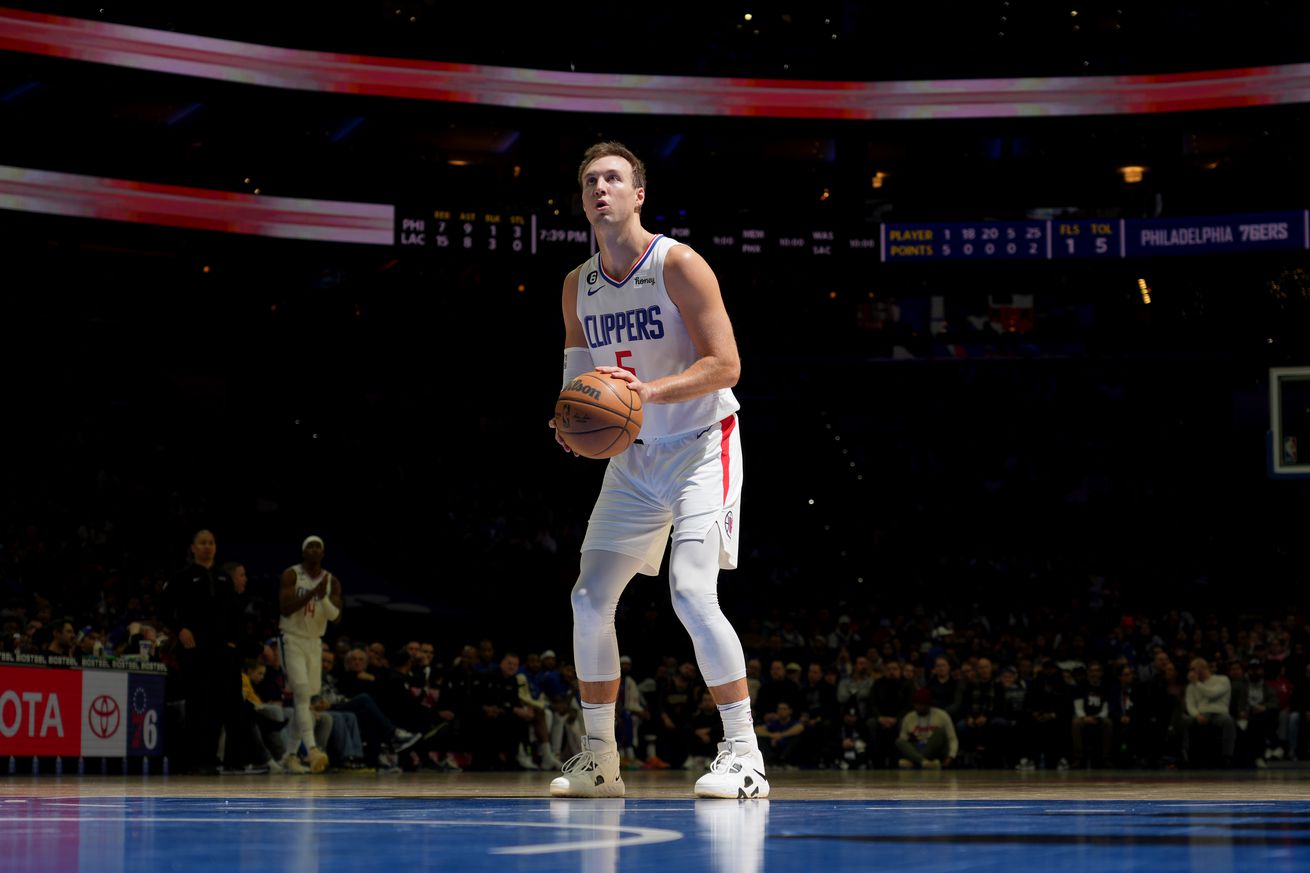
The Duke product’s three-point shot could be the difference maker in the postseason.
In a recent postgame interview, Tyronn Lue was asked, “How many more premier three-point shooters do you think there are in the league?”
His answer was 10. Shortly thereafter, the Clippers’ head coach boldly claimed that of those 10, Luke Kennard is tenth.
That wasn’t necessarily a knock on the Duke product’s three-point game — if anything, it was a demand that he takes more shots. Lue added:
“[Kennard] turns down too many shots… [but] if we’re going based on makes, he’s one of the top guys.”
And Lue is right: Kennard is indeed one of the league’s smoothest, most lethal shooters from long range.
In the 2021-22 NBA season, the left-handed sharpshooter led the league in three-point percentage, knocking down an impressive 44.9 percent of his three-point attempts. He hasn’t slowed down at all this season — his career-high 48.9 percent three-point percentage puts him second in the league, behind the Brooklyn Nets’ Yuta Watanabe.
But the Clippers should expect and want more from him — especially as the team slowly approaches the midseason mark. They need him to be a shoot-first offensive weapon that can scorch opposing defenses.
And how do they achieve that? It’s simple: Kennard needs to be more aggressive with the ball.
We elves try to stick to the four main food groups: candy, candy canes, candy corn, and Luke threes. pic.twitter.com/KL6uM9RUOC
— LA Clippers (@LAClippers) December 24, 2022
The Clippers guard is taking just 4.2 three-point attempts this season, which is almost two less than last season. This type of passivity with the ball is taking away from his greatest asset: his ability to consistently knock down threes — especially when the team needs it the most. We shouldn’t overlook how clutch ‘Cool Hand Luke’ is in the fourth quarter: he cashes in on 52 percent of his late-game three-point attempts.
And he can do this all so effortlessly — in a split second with just a flick of a wrist. Not to mention, he doesn’t need the ball in his hands to make a difference in the game — a facet that can make him a valuable asset, particularly when Kawhi Leonard and Paul George are on the floor.
Kennard can sit and wait in either corner or stealthily run past screens and away from defenders for open looks. In doing so, he doesn’t take the ball away from the team’s superstars, and he sure does help space out the floor.
Close to 85 percent of the lefty’s makes were assisted. In comparison, for a more ball-dominant player like John Wall, just 33 percent of his field goals were assisted. And their offensive production? In terms of points, pretty similar.
That isn’t to say Kennard is more valuable to the team or is a better player. They’re different players that offer different things. But what it does mean is when Lue needs a reliable off-the-ball scoring option in the final minutes of play, there is not a player that does it better than Kennard.
So it’s clear that the Ohio native has all it takes to be a star in the league — an infectious smile, automatic jumper, ice-cold veins. But he isn’t quite that just yet: he is logging a league-standard 9.2 points per game.
Of the many things to blame, his usage rate is one of the biggest.
His usage percentage took a noticeable drop from last year’s 16.8 percent to 15.1 percent, the lowest in his six-year career. He’s taking fewer shots, seeing the court for fewer minutes, and being involved in fewer plays. Perhaps the Clippers aren’t taking advantage of his jumper as well as they should be. Or perhaps Kennard’s passivity is again detracting from his offensive production.
Whatever it may be, the fans, Lue, and Luke Kennard himself all know what he’s capable of. So, we can only hope that Kennard steps up to a bigger role for the Clips and eventually become a key part of ending the team’s decades-long championship drought.